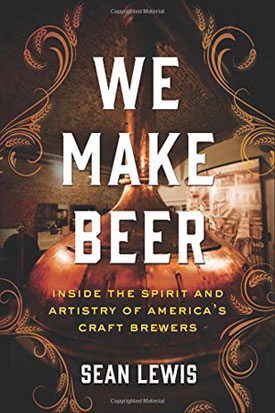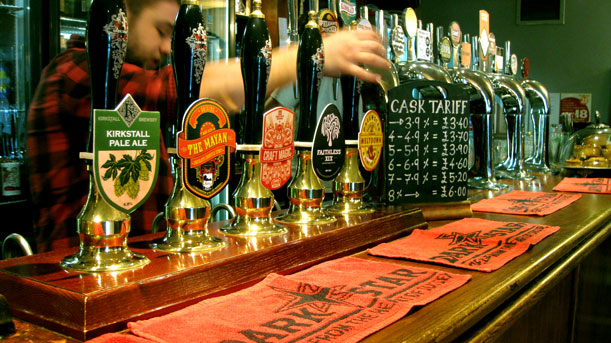
MONDAY BEER LINKS, MUSING 10.20.14
How I pick the links to include here:
– Wednesday morning I received a press release about chef David Chang’s bit of silliness in GQ about “fancy beer.” Friday morning I received a press release about Garrett Oliver’s response, also in GQ. No need to bother with this pissing match. You’re not going to miss it.
– Tuesday morning, because I roll out of bed rather early, Dan Paquette’s Monday night into Tuesday morning rant was near the top of my Twitter feed. And the story sped ahead from there. The ratio of words to actual information was rather high and only by chance did Twitter point me to an interesting (though anonymous and unsubstantiated) post 10 pages into a Beer Advocate discussion. In my youth I was a newspaper city editor. I’m pretty sure that we could have found a way to report this as a local story. It would have taken both feet on the street time and some forensic accounting. When I see a proper story I’ll be sure to link to it. Waiting for that link.
– Although I suspect I’ll be waiting for that particular link a while, Saturday morning Zak Avery used the topic as a jumping off place for an entirely different discussion. Drop that one into Pocket.
Craft Beer in a Post-Craft World. One of Avery’s takeaways is “Beer isn’t going to get any better than it is now” (it appears three times in boldface). In part that’s because it is really good now. I understand what he means when he writes “the technology of craft beer – focusing on quality and flavour without cutting corners to maximise profits – has reached endgame.” But I don’t agree that it won’t get better.
As I type this I realize it could be an entire post, but I’ll try to be unusually concise. Granted, “good enough” and “better” are moving targets. But how do you know that something better won’t come along? I had conversations with people just two weeks ago in which they guaranteed me that Firestone Walker Pivo Pils was the best pilsner-type beer they’d ever tasted. And it hasn’t been in bottles two years.
This isn’t about a quest to find the best pale ale, the best weissbier, the best porter; or even a desire to always be tasting something new. Beer is food, and that means there are more than 3,000 (a lot more, given the freedom many breweries extend multiple brewers) beer chefs operating in the United States. I’m happy enough to think that I’ll never find commercially smoked brisket better than at Louie Mueller’s in Taylor, Texas, but there are times when I might enjoy brisket more someplace else. And I really like sitting in Louie Mueller’s (those are Mueller’s smoke-stained windows at the top).
Avery accurately describes “post-craft era” as a buzz-phrase. I like it. It drew me to his post (Boak & Bailey used the phrase “post-craft world” back in May, but I was in Brazil and missed it until now). In an email not long ago Vince Cottone, who gets credit for giving us the term “craft” brewery, wrote that he was disappointed the term “industrial brew” (which he wrote about at the same time 30 years ago) didn’t get any traction. I’ve been having conversations with brewers about post-industrial beer and post-industrial brewing and although they humor me there is the chance this is only something I’ve made up.
It works better if you don’t aim for a specific definition (sorta like “craft”). But the idea is that brewers at businesses interested in operating on various levels of scale now have the technology that resulted from the R&D very large brewing companies could afford. So we can have beer that is not designed for the broadest audience and shipped all over the face of the earth, but still “cleaner, more consistent, more reliable, less of a lottery.”
The discussion about good, better, best, fantastic, life changing, and so on is a different one. Avery has given us a lot to think about. Makes you wish we didn’t have to wait 112 days between posts. If only because this one also hit the on switch for Max Bahnson.
[Via Tasting the Pith]
So You Wanna be a Brewer? 20 Real Facts About Working in a Brewery. Since I might have hijacked Zak Avery’s idea to make my own point, here’s another reminder that brewing is a business.
[Via Queen City Drinks]
Farmhouse ales of Europe. “Farmhouse ale lives in many more places than people have been aware of.” Wow, what a list. Do we call these indigenous?
[Via Largsblog]
If Everyone Else Is A Beer Expert – Why Not Me? Proof that you can make a point in a lot less space and in a far more amusing way than me.
[Via A Good Beer Blog]
Could Budweiser be better than craft beer? When I posted this on Twitter complained they’d just wasted two minutes of their life reading it. Consider yourself warned.
[Via The Drinks Business]
The Uncritical Embrace of Craft Beer? Also got dissed for posting this link on Twitter. “Did you mean to make me lose that time?” It is long, and it is a topic already discussed at length, but something people are still figuring out. And relevant, I think, to The Session #90 Roundup.
[Via a Tempest in a Tankard]
 It took Jake Scholan more than a while to get around to posting the roundup for
It took Jake Scholan more than a while to get around to posting the roundup for 
